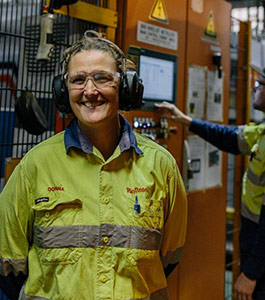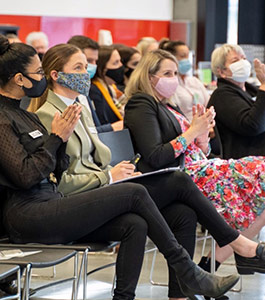COVID-19 has brought workers mental wellbeing to the forefront of organisational return to work strategies, but also shone a spotlight on the crucial nature of looking after worker wellbeing now and in the future. The automotive industry was one of the worst-hit industries in Australia due to the pandemic outbreak and related shutdowns, whereby some states only started to commence operations in late 2020. The mental health fallout of the pandemic has, and still is, affecting the auto industry in coping with stress, insecurity, anxiety and a range of other mental health issues. TWA investigate how the industry has been affected, the impact of the industry shutdown, and strategies workplaces can seek to adopt as part of their recovery phase.
COVID-19 and the Auto Industry
The auto service and repair sector employs just over 130,000 people across 23,000 small businesses. When COVID-19 hit, people stopped getting their vehicles serviced or repaired due to pandemic restrictions. As a result, these workshops experienced a decrease in revenue whereby 50% experienced downturns between 30-40% in metropolitan and rural areas, 12% concerned about surviving post COVID-19. Employee hours were subsequently reduced across the board, retrenchments, and even the removal of whole sections of a business. Apprentices and trainees were severely affected, whereby 78% of employers confirmed they would need to access wage subsidies from the Federal Government in order to avoid termination of their contracts. In addition, subsidiary businesses who are reliant on the success of the auto service and repair sector suffered, currently employing around 360,000 people1,2.
Mental Health Impacts
The overall effects of COVID-19 and its impacts to the workplace on workers are multifaceted. Fear and panic over coronavirus itself are layered on top of stress, uncertainty and over job insecurity. Add to the mix external or personal pressures at home – looking after children during school closures, financial pressures, existing medical conditions and many other issues – many people have ended up experiencing poor mental health in dealing with overwhelming anxiety and even depression3. Whilst the anxiety and level of mental health burdens may decrease over time, the effects of the pandemic and anxiety can take longer to recover from.
Mental Health in the Workplace
Given the green flag to open up their doors again in late 2020, auto workplaces faced an overwhelming task of getting their businesses up and running again, engaging with their employees in their return to work strategies, changing workplace operational strategies, as well as policies and procedures to incorporate COVID-19 compliance requirements. Workplace leaders soon realised that they would not only have to coordinate business recovery, but also focus on how to look after their individual staff member’s mental health. The repercussions of anxiety, isolation and a range of pressures have resulted in many workers showing signs of poor mental health.
Workplace Strategies
Tradeswomen Australia recognise the importance of creating diverse and inclusive environments to prevent poor mental health across industries – the learnings from diversity and inclusion go hand in hand with recommended mental health care strategies:
Work Hours
Working hours was already addressed as a key area for improvement within the auto industry (see: Auto Industry Insights article – link). With businesses up and running, responding to a backlog of requests, workers can end up working longer hours than usual. As the Workplace Supervisor or Leader, it is incredibly important to keep track of, and check in with, individual workers to ascertain their working hours, breaks, as well as how they’re feeling. It is recommended that a risk factors and management plan is created in order to deal with these issues to ensure workers are not likely to burn out4. This may also be a way your workplace can introduce flexible working conditions and arrangements post-pandemic, which can be used to support longer-term shifts in working practices to create happier and more inclusive environments5.
Establish Normality
Whilst operations and procedures might be very different, staff can be encouraged to enjoy the positive side of workplace habits – enjoying a chat with their workmates during a coffee break, working alongside their team, nutting out a challenging technical issue, that they may have missed over the shutdown period. Focusing on the positives as well as establishing a level of normality will allow some workers to start feeling more comfortable and let go of feelings of uncertainty
Establish a safe working environment
To ensure worker confidence in coming back to work, it is vital to try and eliminate (and if not possible) mitigate staff exposure through rigorous safe work practices. Deep cleans, rearrangement of work areas, wiping down tools after use, changing guidelines of use of common areas are some aspects to look at6. In a world where cases of COVID-19 are popping up again and again, it is important that workers know that their workplace leaders are dedicated to looking after their health and creating a safe working environment.
Reconnect and Establish Trust
Some workplaces may have had to shut down areas and even retrench some of their valued workforce. Understand that there will be mixed feelings – anger, resentment, anxiety, distrust – from some workers. Combining steps of looking after worker physical and mental health, reinforcing a level of support and certainty along with communication and consultation over a period of time will allow you to re-establish trust.
Communication and Consultation
Create an inclusive environment where your business’ strategies for returning to work, process, operations and procedures are shared with the workers. Ensure this is founded within a consultative approach, encouraging the team to provide ideas and feedback. This will alleviate any stress and anxiety around processing safely within the workplace, promote best practice and continuous improvement, and most importantly create happiness amongst workers in being included, valued and heard.
Return to Work Programs
Leaders will need to ensure that their return to work programs are embedded with mental wellbeing support mechanisms, which again can be utilised to create long term changes within the workplace7. As a result, workers will feel supported and valued through such initiatives.
Tradeswomen Australia are working with over 100 Automotive Workplaces throughout Victoria to assist them in creating prevention based strategies to improve mental health in their workplaces through diversity and inclusion. Find out more about this ground breaking project here.
- https://nationalindustryinsights.aisc.net.au/industries/automotive
- https://www.aaaa.com.au/news/auto-workshops-hit-hard-by-covid-19-but-optimistic-about future/
- https://www.blackdoginstitute.org.au/wp-content/uploads/2020/04/20200319_covid19-evidence-and-reccomendations.pdf
- https://coronavirus.beyondblue.org.au/covid-normal/workers/strategies-for-transitioning-back-into-the-workplace-after-coronavirus.html
- https://www.ey.com/en_au/health/how-covid-19-reshapes-the-mental-health-needs-of-workers
- Ibid
- ibid





